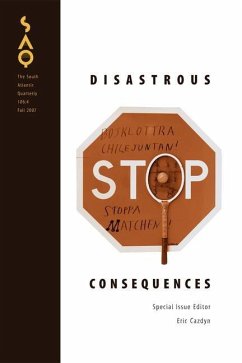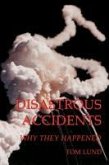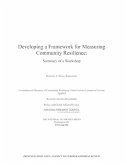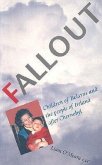Examines the political and social problems that underlie and exacerbate the effects of both natural or 'man-made'disasters
The past few years have seen numerous natural disasters—from the 2004 tsunami in Southeast Asia to the devastation wrought by Hurricane Katrina—a trend many believe will only worsen as the effects of global warming continue. This special issue of SAQ examines the political and social problems that underlie and exacerbate the effects of disasters, be they natural or 'man-made.' From the fields of anthropology, architecture, cultural studies, economics, epidemiology, journalism, and philosophy, the diverse contributors argue that disasters do not follow only from things going horribly wrong (extreme weather, economic collapse, urban decay) but often are the predictable results of things going according to plan. The meaning of disaster itself is challenged, theorized again, and sometimes reconceptualized entirely. One essay argues that media reports during Hurricane Katrina worked to deny or disguise institutionalized racism, suppressing potential dissent and controversy. Another examines how the state bureaucracy reinforces cycles of death, disease, and poverty in South Africa. A contributor explores the devastating conditions of everyday life in Detroit that no longer register in the political imaginary of the United States. Another investigates the connection between unusual weather events and the workings of the Communist Party in Poland. Finally, renowned architect Isozaki Arata plays with the idea of urban planning in two short fables introduced by Fredric Jameson.
Contributors:
Eric Cazdyn, Isobel Frye, Jerry Herron, Peter Hitchcock, Isozaki Arata, Fredric Jameson, Walter Kalaidjian, Leszek Koczanowicz, Leah Schinasi, Neil Smith, Carol A. Stabile, Imre Szeman, Steven Wing
The past few years have seen numerous natural disasters—from the 2004 tsunami in Southeast Asia to the devastation wrought by Hurricane Katrina—a trend many believe will only worsen as the effects of global warming continue. This special issue of SAQ examines the political and social problems that underlie and exacerbate the effects of disasters, be they natural or 'man-made.' From the fields of anthropology, architecture, cultural studies, economics, epidemiology, journalism, and philosophy, the diverse contributors argue that disasters do not follow only from things going horribly wrong (extreme weather, economic collapse, urban decay) but often are the predictable results of things going according to plan. The meaning of disaster itself is challenged, theorized again, and sometimes reconceptualized entirely. One essay argues that media reports during Hurricane Katrina worked to deny or disguise institutionalized racism, suppressing potential dissent and controversy. Another examines how the state bureaucracy reinforces cycles of death, disease, and poverty in South Africa. A contributor explores the devastating conditions of everyday life in Detroit that no longer register in the political imaginary of the United States. Another investigates the connection between unusual weather events and the workings of the Communist Party in Poland. Finally, renowned architect Isozaki Arata plays with the idea of urban planning in two short fables introduced by Fredric Jameson.
Contributors:
Eric Cazdyn, Isobel Frye, Jerry Herron, Peter Hitchcock, Isozaki Arata, Fredric Jameson, Walter Kalaidjian, Leszek Koczanowicz, Leah Schinasi, Neil Smith, Carol A. Stabile, Imre Szeman, Steven Wing








